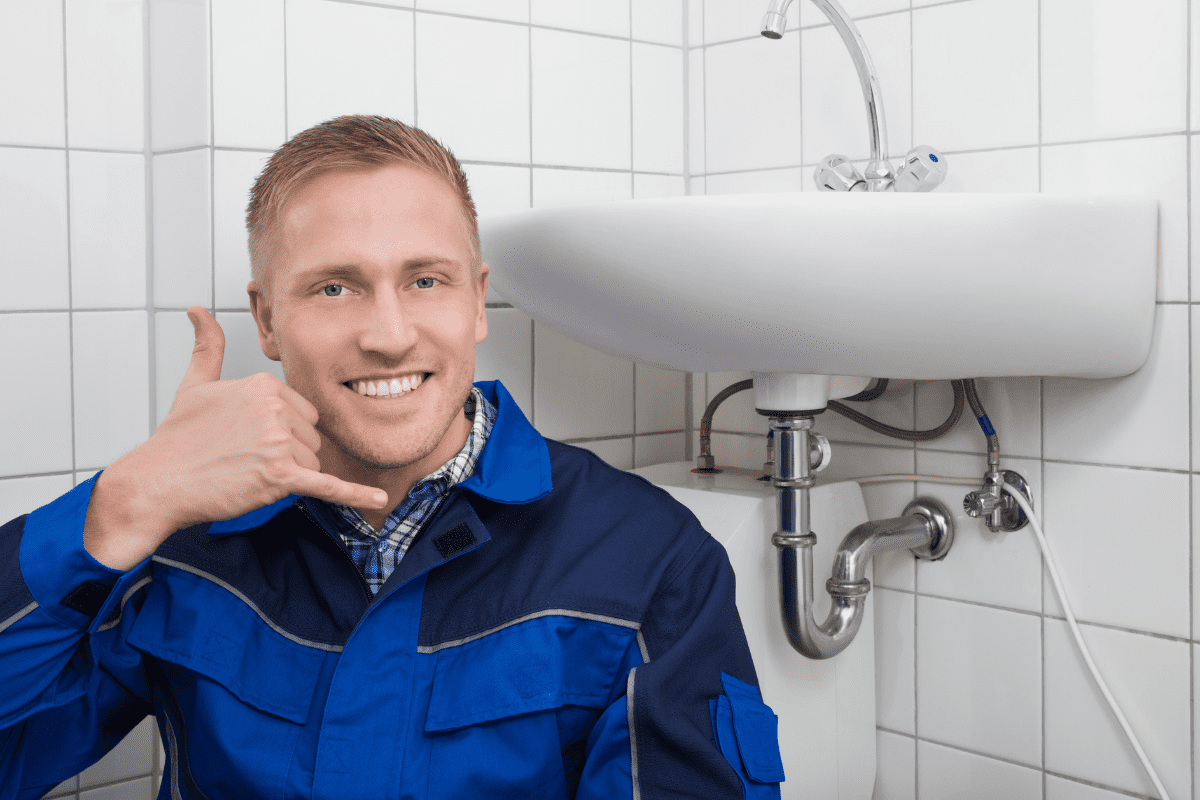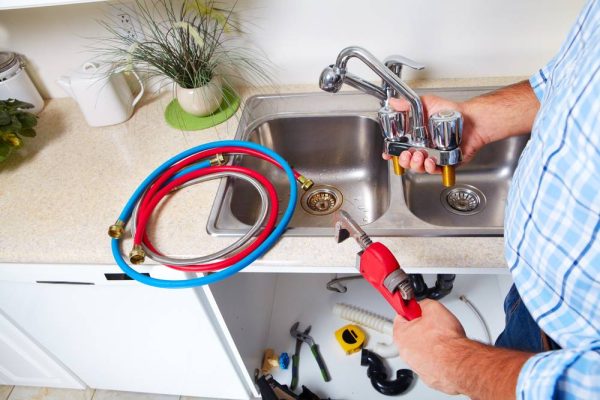How Plumbing is Transforming: Trends and Breakthroughs
How Plumbing is Transforming: Trends and Breakthroughs
Blog Article
Everybody maintains their private thinking with regards to Innovative Plumbing Trends Transforming Construction.

Introduction
The plumbing industry is undergoing a transformative phase driven by technological innovations and growing problems for sustainability and performance. This post discovers arising trends and advancements shaping the future of pipes.
Smart Plumbing Solutions
Incorporating clever innovation right into plumbing systems allows remote monitoring, leak discovery, and automated maintenance. Smart sensors and IoT (Net of Points) devices enable homeowners and plumbers to check water usage and identify issues in real-time, bring about extra reliable resource monitoring and aggressive maintenance.
Water Performance Solutions
With raising emphasis on water conservation, cutting-edge solutions are being developed to reduce water wastefulness in pipes systems. High-efficiency fixtures, greywater recycling systems, and smart watering controllers are amongst the modern technologies aiding customers minimize their water impact while maintaining comfort and benefit.
Lasting Products
The shift in the direction of sustainability includes plumbing materials, with an expanding preference for environmentally friendly choices. Naturally degradable piping products, such as PEX (cross-linked polyethylene) and HDPE (high-density polyethylene), deal resilience and resistance to deterioration without endangering environmental stability.
Predictive Maintenance
Predictive maintenance methods utilize information analytics and artificial intelligence algorithms to expect and prevent plumbing problems before they happen. By assessing historic data and performance metrics, anticipating upkeep formulas can determine patterns and anomalies, allowing proactive interventions to avoid expensive fixings and interruptions.
Enhanced Reality in Plumbing
Increased Truth (AR) technology is transforming pipes by providing technicians with real-time visual guidance for fixing and repair tasks. AR-enabled wise glasses or mobile applications overlay digital info onto the physical setting, aiding plumbers visualize pipeline formats, recognize hidden leaks, and perform repair work with precision.
Influence of 3D Printing
The advent of 3D printing has actually introduced brand-new possibilities in manufacturing plumbing components. From custom-designed components to detailed pipe installations, 3D printing allows for fast prototyping and on-demand manufacturing, lowering lead times and making it possible for greater customization in pipes style.
Health and Safety Characteristics
In reaction to enhanced issues for health and wellness, pipes components are including features such as antimicrobial surface areas, touchless procedure, and self-cleaning devices. These advancements not only enhance hygiene however likewise promote customer comfort and benefit.
Hygiene-focused Components
Touchless faucets, self-sanitizing commodes, and antimicrobial surfaces are becoming progressively common in property and business settings, decreasing the danger of germ transmission and promoting a cleaner, healthier setting.
Water Quality Monitoring
Innovations in water high quality monitoring innovations make it possible for house owners to keep track of the pureness and safety of their water in real-time. Smart water top quality sensing units can spot pollutants, pH levels, and temperature variations, equipping users to take aggressive measures to make sure water safety.
Remote Pipes Solutions
Remote diagnostics and online help are changing the method plumbing solutions are supplied. With video clip conferencing and remote gain access to innovations, plumbing technicians can troubleshoot concerns, provide guidance for do it yourself repair services, and also perform remote examinations, providing higher accessibility and comfort to homeowners.
Obstacles and Opportunities
While pipes technologies hold tremendous promise, they also present obstacles such as data privacy concerns, governing compliance, and the demand for labor force training. Dealing with these challenges needs cooperation in between industry stakeholders and governing bodies to guarantee safe and accountable execution of brand-new innovations.
Governing Landscape
Regulative structures play a critical function fit the adoption of pipes technologies, with requirements and codes regulating whatever from water performance to product safety and security. As innovations continue to progress, regulative bodies must adjust to ensure consumer defense and ecological stewardship.
Future Expectation
The future of plumbing is characterized by continued development and assimilation with various other markets such as IoT, renewable energy, and structure automation. By embracing sustainable practices, leveraging emerging technologies, and focusing on user-centric style, the pipes market is positioned to attend to the developing requirements of culture while lessening its ecological footprint.
Verdict
In conclusion, the future of plumbing is defined by a convergence of modern technology, sustainability, and user-centric design. By embracing smart options, sustainable materials, and proactive upkeep techniques, the pipes market can improve effectiveness, advertise safety and security, and add to a more sustainable future.
Plumbing Industry Trends You Need To Know
Smart technology in plumbing
Homeowners want to be able to manage their homes from their phones. The technology exists to make that happen. From smart toilets to leak detector devices, the whole plumbing system can be managed on an interconnected network made up of sensors, IoT devices, and machine learning algorithms.
This allows for wireless control to turn appliances on and off, automate routines, and access advanced monitoring to track water usage and flag potential issues. Smart technology streamlines water consumption, maintenance and energy usage, creating a more efficient system.
Green plumbing
The data analysis possible with smart technology not only improves convenience and cost-effectiveness but also fulfills a high-priority customer desire – sustainability. Consumers are very aware of their impact on the planet and want plumbing solutions to reduce damage and support sustainability. Eco-friendly plumbing solutions are already starting to emerge.
Customers can opt for low-flow toilets, water-saving faucets, and connections to sustainable energy sources. Beyond monitoring water consumption, customers can conserve water through the installation of greywater systems. This is a system that collects water that has been used but is still clean enough for some household uses such as toilet flushing.
Shorter product pipeline
To keep up with modern plumbing, plumbers need modern tools that enable them to complete jobs more efficiently. One technology making strides in this area is 3D printing. By 3D printing key plumbing fixtures, plumbers can reduce wait times even for specialized fixtures. It minimizes delays often seen in traditional manufacturing that frustrate customers and prevent plumbers from taking on more work.
Off-site repairs
Augmented reality is making a splash in many industries including plumbing. Plumbers can map a building online so they can explore the plumbing system through augmented reality, identifying areas of maintenance and repair completely digitally. This technology can be applied quite widely in plumbers’ work including planning installations and training new recruits. It’s safer, smarter and more efficient.
Low-footprint materials
Another way for plumbing companies to reduce their environmental footprint and meet the customer demand for sustainability is by using recycled materials in their work. The products they source and manufacture such as pipes, fixtures and faucets can be made from recycled materials. This saves the planet while being just as effective.
Onsite water purification
Additionally, plumbing companies can be advocates of water conservation and ease the financial and environmental concerns of customers by offering water purification systems. New water purification technology such as reverse osmosis systems and UV systems make it possible for homeowners and business owners to thoroughly cleanse water, removing contaminants onsite. This means the water can be safely reused in more ways than greywater can be, establishing a water recycling loop.
Tankless water heaters
Another innovation of modern plumbing is tankless water heaters. The idea is that the water is heated on demand as it runs through the system instead of being heated in a water tank. This is more energy efficient and therefore cost-effective and eco-friendly because water isn’t heated needlessly.

I was introduced to that report about The Future of Plumbing: Trends and Innovations to Watch through an acquaintance on a different website. Sharing is caring. You won't know, you could be helping someone out. I thank you for reading our article about 7 Plumbing Industry Trends You Need To Know.
Call Report this page